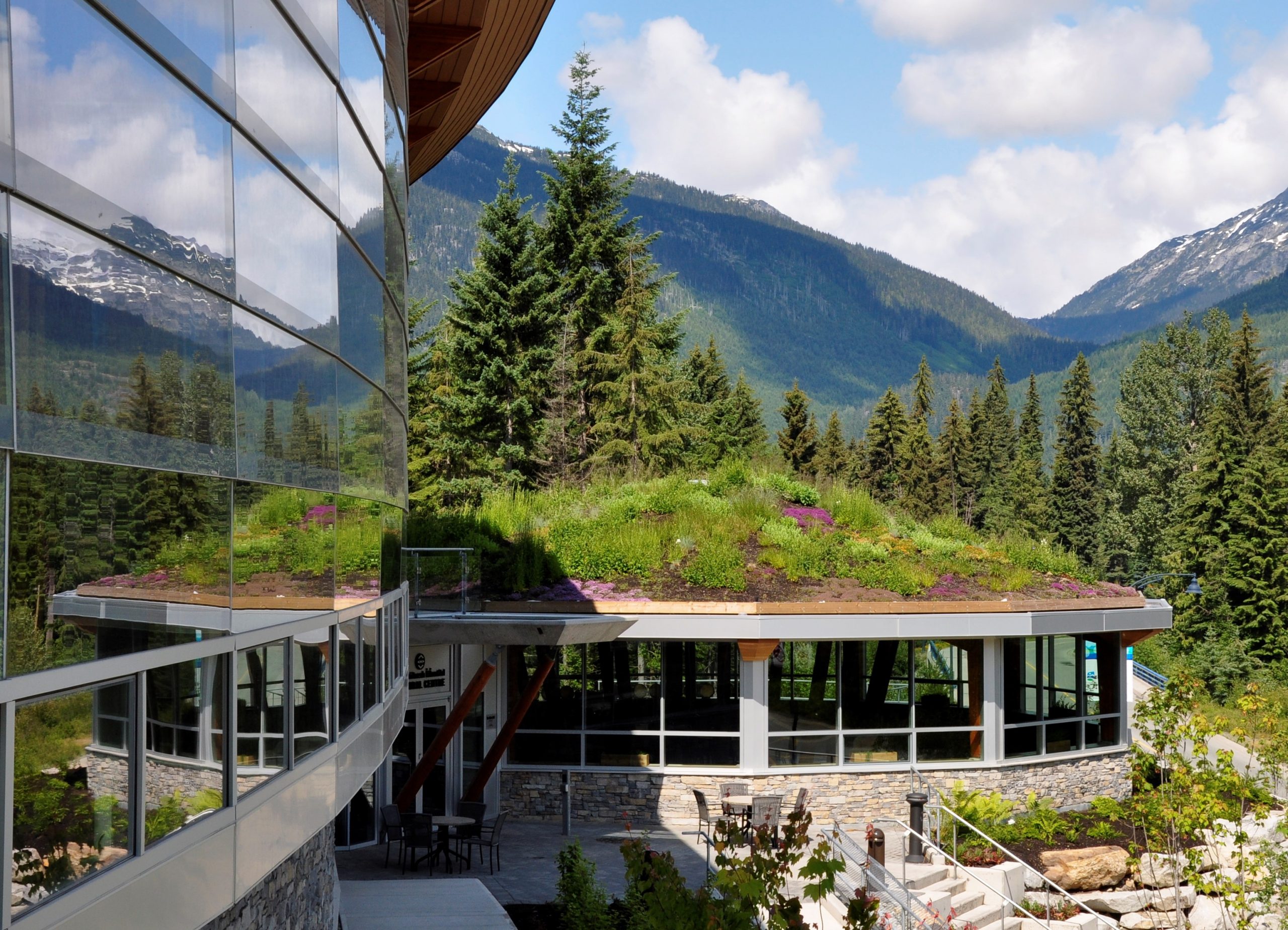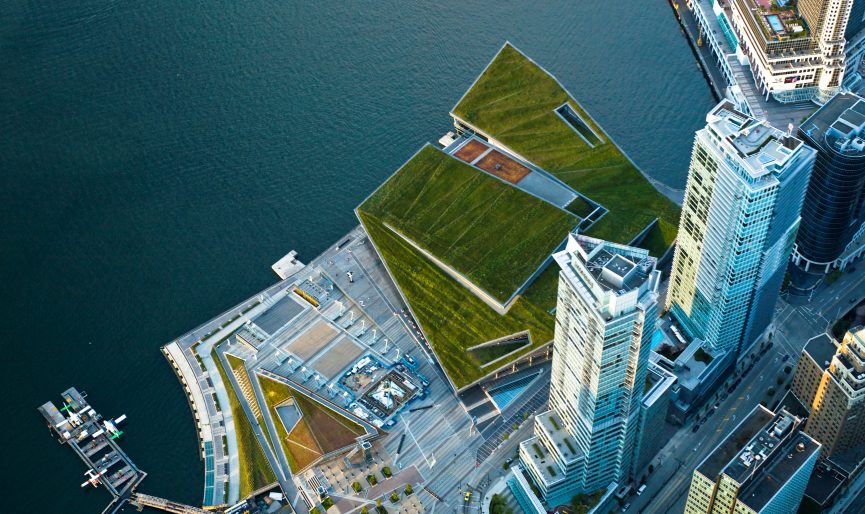Green roofs are nothing new; however, their potential has greatly surpassed what it used to be when they first emerged from Europe as an effective means for energy conservation. Touted for a variety of socio-economic and environmental benefits, including rainwater absorption, added insulation, creating valuable greenspace, helping to lower urban air temperatures, and mitigating the heat island effect, the trend took off in Canada around the mid-2000s. But just as the pursuit of carbon neutral has raised the bar on commercial building design, so too has it raised the bar on green roofing systems.
Colin Tougas, Project Engineer with RJC Engineers, has been entrenched in the evolution of the green roof for some time. He recently conducted a study with Pearl Yip, Landscape Architect with PWL Partnership, comparing various sizes, layouts and reusable materials when used alongside lower embodied carbon products.
“The carbon neutral green roof assembly pushes the building envelope by providing an actual measure of a green roofing system’s performance,” he says. “Many professionals in our industry are wary of greenwashing, which is to make something appear “greener” while not considering the impact on sustainability.”
Planting the seeds: the emergence of green roofs in Canada
In 2009, the City of Toronto incorporated a new bylaw requiring green roofs to be included in all new developments. Meanwhile, other Canadian cities were also on board. In 2010, the Vancouver Convention Centre finished installing its green roof in order to promote sustainability, making it the world’s first double LEED Platinum certified convention centre. In 2005, Ottawa installed one of the largest green roofing systems in North America over the Canadian War Museum to demonstrate its commitment to sustainability.
Since then, sustainability practices have evolved considerably with the new goal being to achieve lowered embodied carbon. With green roofs, there is great potential to push the results beyond “zero”, exceeding carbon neutral to create an environmental benefit; in other words, to intentionally remove carbon dioxide from the atmosphere.
“By making carbon neutral assemblies the new standard, we are moving closer to green roofing systems that are carbon positive,” explains Tougas. “A carbon positive system begins to offset the carbon footprint of the underlying structure and building beneath the green roof.”
Aiming for longevity: the key to carbon positive green roofs
The typical components of a green roof system include vegetation that is planted over a waterproofing system designed with a root barrier and adequate drainage and irrigation systems. In terms of size and scope, these systems can be complex or simple with space, budget and maintenance constraints ultimately steering the outcome.
As Yip puts it, “Green roofing is more expensive than a ballasted or paved roof, and the inclusion of landscaping adds to the maintenance requirements, but the cost of these cheaper alternatives is an increased carbon footprint.”
The limiting factor with most green roofs today is the service life of their waterproofing membrane, which typically only last about 30 years regardless of condition and performance history. This means that all your lush, beautiful greenery will need to be removed at the end of that service life to access and replace the waterproofing membrane.
“Designing waterproofing for green roof systems with extended service lives will allow for the landscaping to maximize its potential,” Tougas says.
Adds Yip: “The longer the living components can remain in service, the greater the potential to offset the embodied carbon of the entire system.”

All photos provided by: PWL Partnership Landscape Architects Inc
Choose local
Another important step, according to Tougas, is to choose locally manufactured and sustainable materials that still meet the long-term performance requirements of the overall system. This combined with your chosen vegetation can significantly improve sustainability.
The main restriction in terms of design will stem from how tall your plants will ultimately grow. “If you allow for collaboration between professional landscape architects and the building envelope engineers, these impacts can be mitigated,” he says. “But going with a green roof doesn’t necessarily mean increasing your structural requirements.”
Finally, Yip suggests owners keep it simple by opting for gardens featuring local plant species as a way to promote habitats for local birds and insects.
“Local plants would reduce the maintenance requirements and need for irrigation,” she says.
3 ways to get more from your green roof design:
- Design for a waterproofing system with an extended service life.
- Choose locally sourced materials and components.
- Select local plant species to reduce maintenance and irrigation needs.
To find out more, visit www.rjc.ca or contact Colin Tougas directly at ctougas@rjc.ca.







